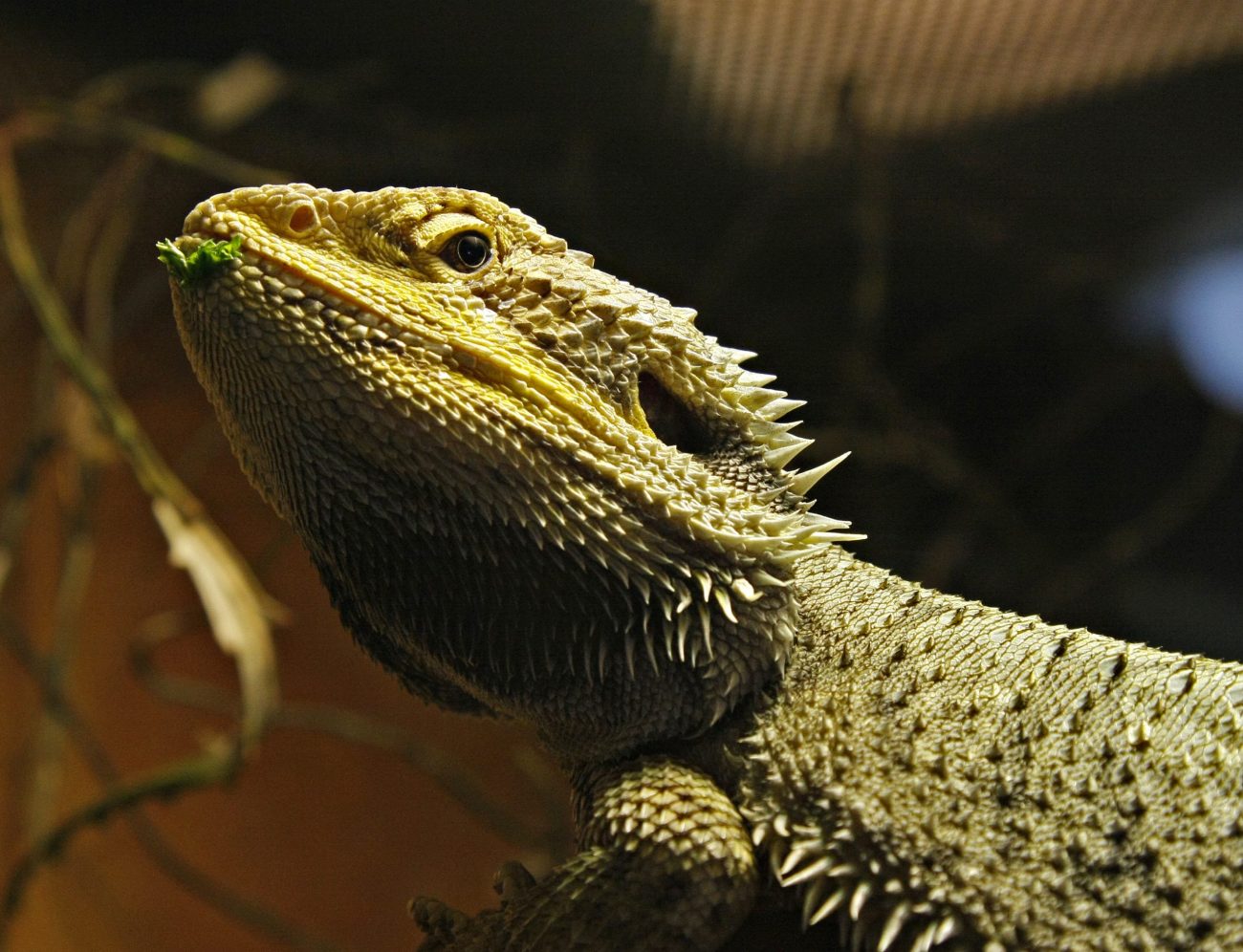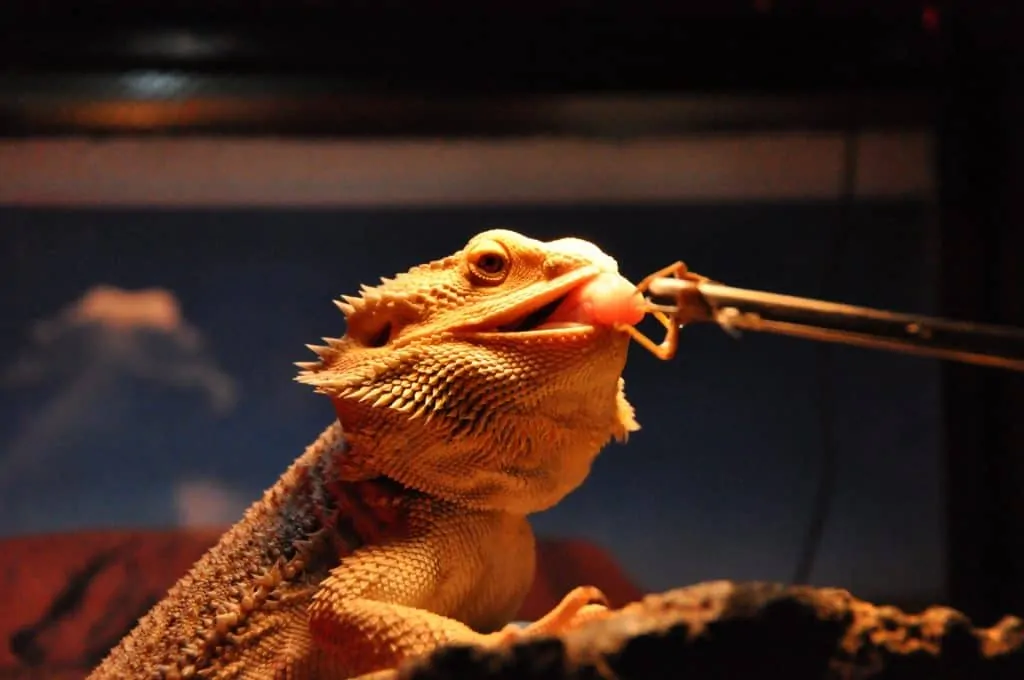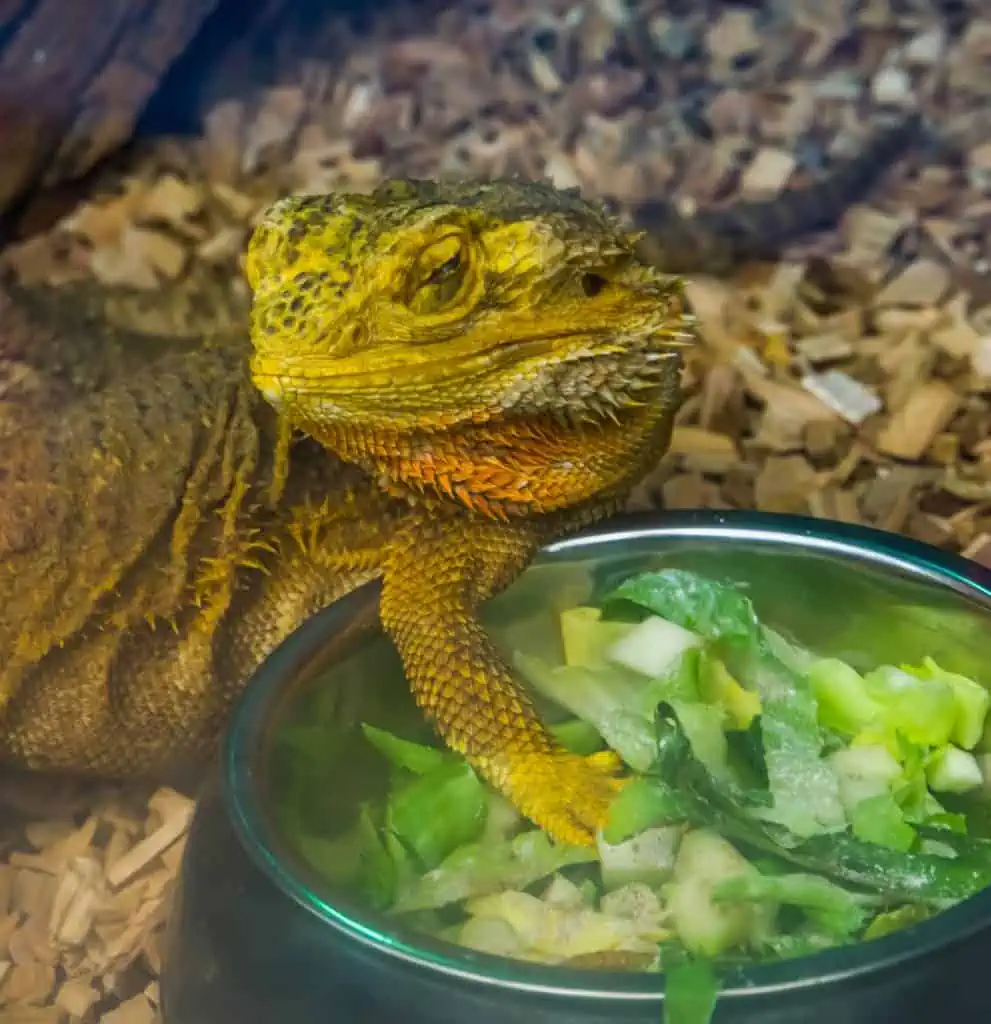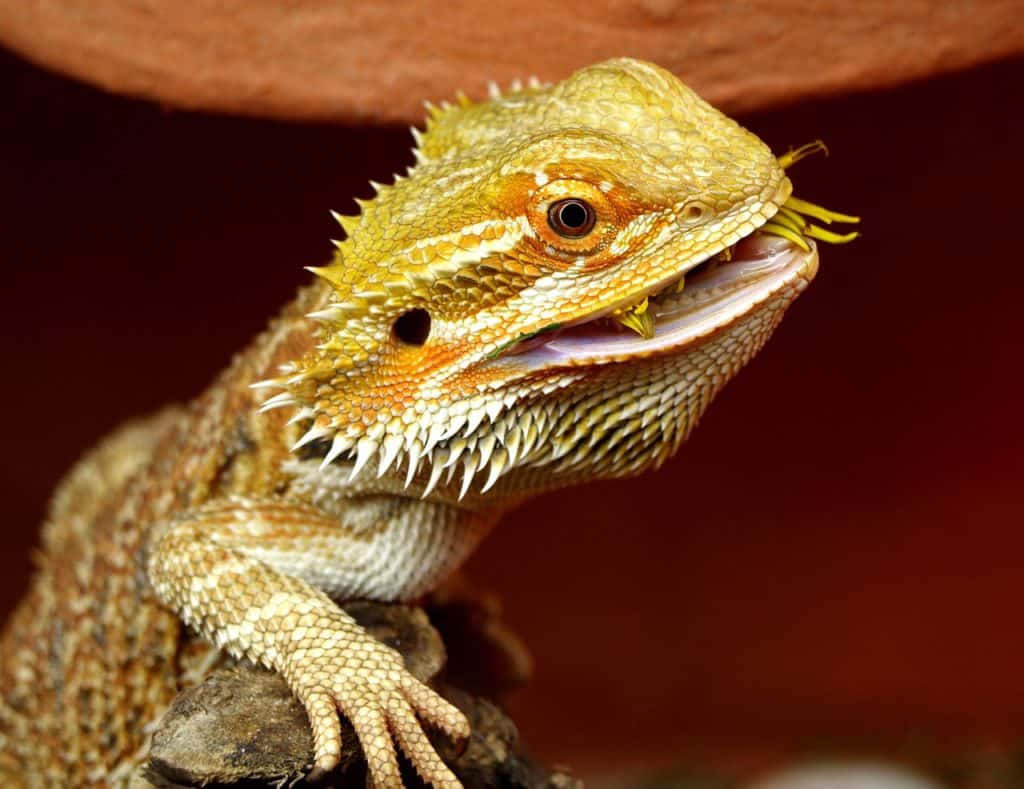Finding information about what to feed your bearded dragon is not difficult. However, some information is often overlooked. For example, do you know the dietary needs at the different stages of your pet’s life? Do you know how much to feed your bearded dragon?
The basic diet of bearded dragons does not change. It needs to be a combination of animal and plant matter. However, the ratio of these dietary components does change with age, as does the feeding frequency.
Knowing this information can help you to meet your pet’s nutritional needs. You will find answers to these questions and more in this article.
How Often to Feed Baby Bearded Dragons?
Because baby bearded dragons (three months or less) grow rapidly, they need a protein-heavy diet. They also should be fed feeder insects three to five times a day. You can feed them greens once a day. Juvenile dragons (four to 11 months old) can be fed three to four times a day.
Baby Dragon Diet
Recommended feeders for baby dragons include:
- Crickets
- Dubia roaches
- Super worms
- Waxworms
In addition, feeders make a salad for your bearded dragon by providing a mixture of dark, leafy greens and fresh vegetables. As babies, bearded dragons are primarily carnivorous. For this reason, they may not eat much.
Baby dragons need a high-calcium diet that is phosphorous-free. You can meet this requirement by sprinkling calcium power, which contains vitamin D3, on your pet’s food three times a week.
How Often to Feed Adult Bearded Dragons?
Beardies that are twelve months or older are considered adults. Since adults use up less energy than babies, they do not have to feed as often. An adult bearded dragon will do well being fed once a day.
Nutritional Needs for Adult Dragons
Feeding frequency is not the only thing that changes with adulthood. Mature bearded dragons also need less protein than younger lizards. Because of this, I recommend that only 20% of their diet be feeder insects. The remaining amount should be plant-based foods.
As with baby bearded dragons, I urge you to make a salad for your adult dragon. Make a mixture of dark, leafy greens and fresh vegetables.
Bearded Dragon Feeding Chart
This chart shows how much and how often you should feed your bearded dragon according to age.
| Age (in months) | Feeder: Quantity | Feeder: Frequency | Vegetables: Quantity | Vegetables: Frequency |
| Babies (3 or less) | What can be consumed in 10-15 minutes. | 3-5 times per day. | What can be consumed in 30 minutes. | One time per day. |
| Juveniles (4-11) | What can be consumed in 10-15 minutes. | 3-4 times per day. | What can be consumed in 30 minutes. | One time per day. |
| Adults (12 and over) | What can be consumed in 10-15 minutes. | 1-3 times per week. | What can be consumed in 30 minutes. | One to two times per day. |
What’s the Correct Bearded Dragon Food Size?
The amount that you feed your bearded dragon per meal will depend on its age:
Protein (Live Feeders)
- Baby dragons: Feed what they can consume in 10-15 minutes. A rough estimate would be 10-20 Dubia roaches per meal. When feeding crickets, feed between 30 and 60 daily.
- Juveniles: Feed 10-15 Dubia roaches twice daily or 20-40 crickets per day.
- Adults: Feeding can be reduced to 10-20 Dubia roaches or crickets once or thrice a week. I strongly recommend that you do not feed live feeders more than three times a week due to the risk of obesity.
Because of their size, superworms should be only given to adult beardies. Since super worms are high in protein, limit your feeding to 7-10 every other day, if not less.
Plant-Based
Adult bearded dragons should be given vegetables daily. As for the amount, feed your beardie as much as it will eat in thirty minutes. Any remaining vegetables should be removed after this time. This is because you do not want bacteria or mold to grow.
What is the Best Thing to Feed a Bearded Dragon?
When feeding bearded dragons, the key is to offer variety. Offering variety increases the chances of your dragon receiving its nutritional needs. Keep your beardie happy by offering a variety of insects and veggies.
Feeders
- Crickets: While crickets are good food, do not make the mistake of making them a staple. Remember, it is important to offer variety. Crickets are good for adding variety. Also, crickets are sometimes available in canned form, not just alive.
- Dubia Roaches: Dubia roaches offer more nutritional value than crickets. They are high in calcium and protein but low in fat.
- Black Soldier Fly Larvae: Also known as Phoenix Worms and ReptiWorms, black soldier fly larvae have a very high calcium content and protein but are low in fat. For these reasons, black soldier fly larva is great for baby and juvenile dragons. However, adult beardies may not show interest in them due to their size and inactivity.
- Hornworms: Hornworms are large, so they are best for adult beardies. Hornworms are high in moisture and nutritional value. Because of their high moisture content, they are great to feed beardies who have gone through brumation. At the same time, their high moisture content can cause diarrhea if eaten too often.
- Red Runner Roach: Also known as the Turkistan roach, red runner roaches are very active, so they will give your beardie something to chase!
Vegetables
When feeding plant material, 80-90 % should be in the form of leafy green vegetables. Some of the top choices for vegetables include:
- Collard greens
- Bok choy
- Mustard greens
- Beet greens
- Clover
- Bell peppers
- Turnip greens
- Cilantro
- Kale
- Broccoli
- Bok choy
- Alfalfa
- Hay/Chow
- Watercress
- Parsley
- Savory
- Escarole
- Cabbage (red/green)
- Green beans
- Swiss chard
- Dandelio
The following vegetables should make up a smaller portion of the diet:
- Cactus
- Parsnips
- Mushrooms
- Squash (various kinds)
- Okra
- Carrots
- Sprouts
- Cucumber
- Peas
- Cooked sweet potato
- Asparagus
- Corn
Avoid vegetables that are nutrient-poor and fiber-rich. This would include light green vegetables like celery and iceberg lettuce. Also, the light-colored parts of vegetables are less nutritious than the darker-green parts.
Fruits
When feeding your beardie fruits, do so sparingly. Fruits generally lack the minerals that the preferred veggies have. The following are the recommended fruits to give to your bearded dragon.
(Bold indicates the most nutritious fruits)
- Apple
- Grapes/raisins
- Guava
- Apricot
- Pear
- Star fruit
- Kiwi
- Dates
- Banana (with skin)
- Peach
- Melon
- Raspberry
- Mango
- Tomato
- Figs
- Strawberry
What Can’t Bearded Dragons Eat?
The following food items should not be given due to the potential risks involved:
- Avocados: Avoid feeding avocados as they have high levels of oxalic acid. Oxalic acid can cause problems with the metabolizing of calcium. Also, avocados are often sprayed with persin, a fungicide. Persin is toxic to reptiles.
- Onions: Do not feed bearded dragons onions, as they are too acidic.
- Dairy Products: Bearded dragons are unable to digest dairy products.
- Meats: Meats and chicken should be avoided because they are high in phosphorus. A diet that is high in phosphorus can cause problems with the absorption of calcium. While offering your bearded dragon occasional bits of meat is okay, following the suggestions in this guide would be better.
- Fish: Bearded dragons also do not experience fish in their natural environment. For this reason, they may have trouble digesting it. Additionally, fish may contain bacteria and parasites that may harm your pet.
- Wild-Caught Insects: Do not feed wild-caught insects, as they may been exposed to pesticides.
Can You Overfeed Bearded Dragons?
The answer is definitely! Bearded dragons are just like people. Overeating can be a problem. This is why it is important to follow the suggestions in this article. You may end up with a bearded dragon that is obese if you overfeed it.
Obesity is more common in adult bearded dragons than in younger lizards. Because of their rapid growth rate, baby beardies can burn off the fat more easily. In adult bearded dragons, obesity is commonly caused by improper feeding.
Typically, they are given too many feeder insects and not enough vegetables. Remember, an adult bearded dragon’s diet should contain about 80% vegetables.
Why is My Bearded Dragon Not Eating?
The following are possible reasons for why your bearded dragon is not eating:
Brumation
Brumation is similar to hibernation. When an animal hibernates, it goes into a state of dormancy. Its bodily functions come to a halt. Brumation is like a lighter form of hibernation. Instead of going into a dormant period, the beardie’s bodily functions slow down.
If your dragon is brumating, do not disturb it, but keep offering food. Also, it is important to note that bearded dragons do not brumate until they reach an age of nine months or older.
If your bearded dragon is younger than nine months, it likely it’s not eating is not due to brumation. If this is the case, have your bearded dragon seen by a veterinarian.
You can distinguish between a brumating bearded dragon and a sick one. A bearded dragon that is brumating will find a place to hide. It will look healthy but appear sluggish. A sick bearded dragon may remain in the open but appear weak.
Shedding
Reptiles may stop feeding when they undergo shedding. When shedding, your beardie’s skin will become paper-like and flake off in pieces. Your bearded dragon should resume eating after it completes the shedding process.
Temperature and Lighting Issues
If bearded dragons are not kept at the right temperature, they will stop feeding. This is also true if they are not provided with the proper lighting. Bearded dragons should be provided with a thermal gradient. In other words, one part of the enclosure should be warmer than the others.
The warmest part of the enclosure should be between 104-107 degrees Fahrenheit (40-42 degrees Centigrade). The cooler parts should be 71-77 degrees Fahrenheit (22-25 degrees Centigrade).
As for lighting, bearded dragons need high-quality UVB lighting. Without it, your pet may get metabolic bone disease due to lacking Vitamin D3.
Vitamin Deficiency
Bearded dragons will stop eating if they are suffering from a vitamin deficiency. Vitamin deficiencies are commonly caused when bearded dragons are not given the proper nutrition and lighting. They are commonly short of Vitamins A, B1, D3, or E.
You can prevent a vitamin deficiency by providing a varied diet of nutritious foods and adding supplements as described in this article. If your bearded dragon is not eating, I recommend that you bring it to a veterinarian.
Take Care!
We hope that you enjoyed this article. Knowing the feeding requirements of bearded dragons at their different stages of life is critical if you are to be healthy. The key is to know what to feed them, how often to feed them, and how much to feed. Each age group has its requirements.
We would enjoy hearing your comments. Please share this article.





